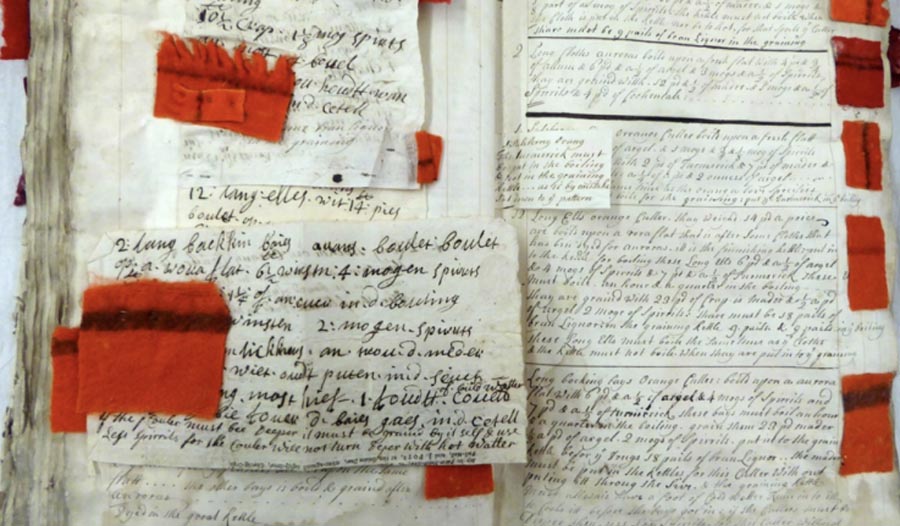
ELEANOR HUMPHREY - The conservation effort to save historic Crutchley dyeing records

Image: From the Crutchley collection - 6 dyeing recipes from the 1720's in Flemish and English
The Crutchley Family were dyers in the 18th century with dye-works in Southwark, located near the south bank of the Thames between Clink Street and Deadman’s Place.
Recently committed to the UNESCO Memory of the World Register, the Crutchley archive presents a rich study resource for historians of textile production, dyes and dyeing, dress and textile history, fashion, economics and business. Dyeing was a hugely important industry in this period – as well as being a cornerstone of fashion, dyed textiles were an important export. An intricate and expensive business, dyers coloured cloth using natural dyes, often extracted from plants: essentially boiling cloth in a giant vat of herbal tea. A lot of dyeplants had to be imported, and finished cloth needed to be stretched and dried – so places within easy reach of water, wharves, and wide open spaces were ideal sites for dyehouses.
Fourteen of the Crutchley’s dyeing and business account books dating from around 1716-1744 were miraculously retained by the family, and in 2011 Crutchley’s descendants donated this collection to the Southwark Local History Library and Archive after some parts became water-damaged during storage.
The three books selected as conservation priorities are the earliest in the collection. They include a recipe book with instructions for dyeing broadcloth, a pattern book and an ingredient book, all with dyed samples. It is incredibly rare that material culture relating to dyed textile production of this type and period survives, as a provenanced collection in such good condition and extent. The books will be treated for mould, the pages cleaned and resized, and loose dye samples will be fixed. When the books are in a stable condition and fit for handling they will digitised in the hope that local residents and charities will research and reproduce dye samples using the recipes.
After conservation the historical research can be developed further and we will be able to work with local residents and charities to reproduce the dye samples using the recipes. Geographically, it will also allow us to discover how far the Crutchley business extended onto the Continent.
To find out more about the Crutchley family dyeing business records, visit the National Manuscripts Conservation Trust website.
